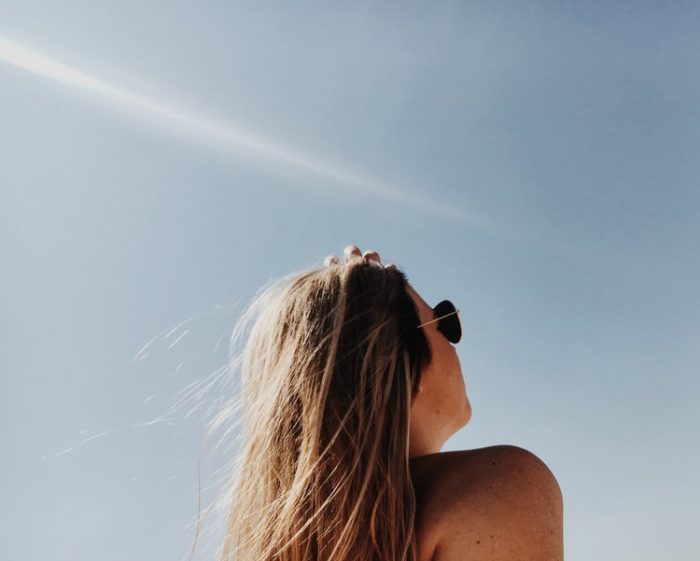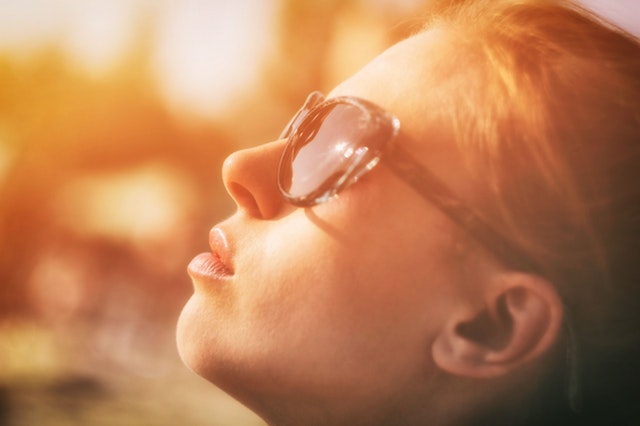
Struggling with “greasy” hair that’s weighed down with excess oil by midday? Eco-beauty expert Jacalyn Beales has discovered some great tips for managing oily locks.
- A version of this article previously appeared on JacalynBeales.com.
Let me begin by saying that I never had oily hair.
I mean, I’ve experienced oily hair, but only when I chose to forego washing it for two to three days at a time–something I did frequently when camping, hiking, or traveling for extended periods of time. But having “naturally” greasy hair was never something I had to worry about.
As I got older, both my skin and hair changed–my skin, for the better. My hair? Not so much. I began to notice that, suddenly, my hair was producing more of its own natural oil regardless of how often I shampooed or didn’t. I first noticed this dilemma when, after showering one morning, I noticed my hair looked slightly oily halfway through the day. This pattern continued until, finally, my frustration and cluelessness got the better of me. A visit to my naturopath clarified that my body had simply changed as I’d matured and that sometimes, one’s hair and skin can change in the process. I could try vitamins or specific products to solve my oily hair issue, or I could simply try a few DIY-esque techniques to battle oily hair.
I chose to go the DIY route, particularly because most of the vitamins I tried made my skin temperamental, and many oily-hair-care products contain a plethora of weird, artificial ingredients. Now, if you happen to have oily hair and are at your wit’s end as to how to handle it, one or more of the tricks I use might work for you, but if you have serious hair-care issues, it’s always more conducive to consult a professional’s advice.
1. Wash and Brush Your Hair Upside Down.
This tip might seem a bit quirky and, well…weird. But it’s actually been a pretty big game changer for my hair, and apparently, it’s been proven to work as part of inversion therapy for hair. The idea behind the technique is that by bending over and tipping your head upside down at a 90-degree angle (or more), you increase the blood flow to your scalp, which allows more nutrients to reach the hair follicles. By increasing blood flow, less sebum (oil) builds up on the scalp, making way for locks that are less oily and weighed down by natural oils. I wash my hair upside down whenever I shower and brush my hair upside down (morning and night), and have noticed a significant difference in the amount of oil my hair produces. The best part? This is a product-free, easy-to-do technique.
2. Swap Heavy Conditioners and Treatments for Healthy Masks.
I love hair treatments just as much as the next girl, but they tend to weigh down my hair and make my locks more oily, almost as though they add more grease to my hair. Heavier oils like argan and coconut can weigh down the hair, especially at the scalp, and if loaded with artificial ingredients and chemicals, they likely will do nothing to help fix your #oilyhairproblems. Instead of conditioners and treatments, I stick with natural, homemade masks that contain ingredients like aloe vera and avocado. I’ve had great luck with DIY-masks made with honey or bananas, but the type of mask you whip up at home will depend on what works for you personally.
3. Give Apple Cider Vinegar a Go.
The ever-popular apple-cider-vinegar rinse has been poked and prodded by pretty much every major magazine, beauty blogger, and digital lifestyle platform. I didn’t buy into the hype until one day, I found myself pouring one part ACV, two parts water, into a spray bottle and dousing my scalp with it after a quick shampoo. I waited three minutes, rinsed the mixture out and was pleasantly surprised to see my roots far less oily than before. Apple cider vinegar rinses and toners have become so popular thanks to ACV’s balancing and clarifying properties. In fact, you’ve probably read somewhere yourself how ACV helps to balance the scalp’s pH and can remove oil and product build-up from the hair. I don’t use this rinse every day–about once a week–but I find it helps improve the oiliness of my hair to the point that it’s nonexistent.
4. Change Up Your Shampoo for Something more Effective.
One of the first things I did when I finally decided to take charge of my oily hair was to change my shampoo. Up until that point, I was using an organic shampoo bar that was doing a great job of gently cleansing my hair, but it was ineffective when it came to fighting oil. It’s important to choose a shampoo or cleansing product that’s targeted specifically at combatting oily hair, like Good4You’s Herbal Shampoo or Kali Flower Organic’s Birch Leaf Shampoo. I’ve tried both with pretty awesome results, and I find that using shampoos formulated specifically for oily hair is far more effective than a generic, “all-purpose” cleanser.
5. If You Must Condition, Condition First.
I once read somewhere that conditioning your hair before you wash it not only makes the properties of a conditioner more effective but also keeps your hair from becoming too oily because the conditioner is fully washed out instead of simply rinsed out. Whether or not that’s “scientifically” true, I haven’t a clue, but it tends to work well for me on the rare occasions that I add conditioning to my hair-care routine. It seems to keep my hair soft without adding more “grease.” You could try co-washing instead, but I can’t personally attest to the benefits of the conditioner-only cleansing method.
__
Regardless of the DIY tips and tricks you read here and on other blogs, doing what works best for your hair should always come first. And, as mentioned earlier, if you have particularly severe hair issues, speaking with a professional is your best option.
Do you have any smart tips for dealing with oily hair?
Also by Jacalyn: 4 Delicious and Cozy Vegan Hot Chocolate Alternatives
Related: DIY Hair Build-Up Cleanser
5 Tips for Growing Your Hair Out
Get more like this—Subscribe to our daily inspirational newsletter for exclusive content!
__
Photo: Unsplash




